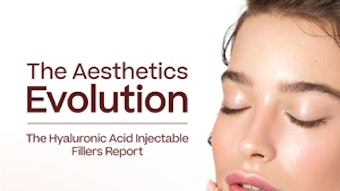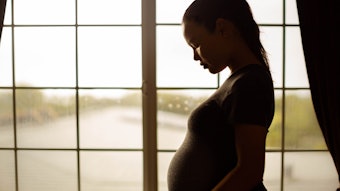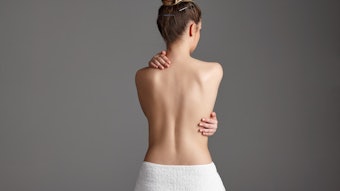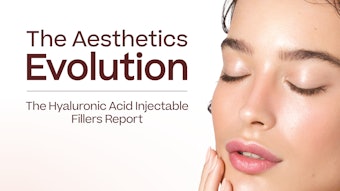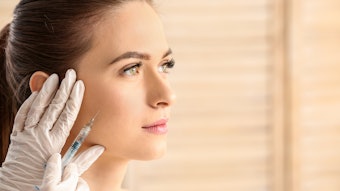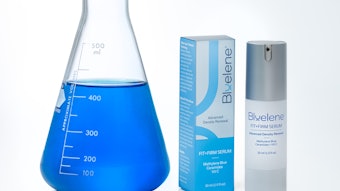
Appreciating and understanding ethnic and cultural diversity in aesthetics and the need to take those differences into account when it comes to celebrating individual beauty across the spectrum is a trend spreading across the globe. Recognizing the different beauty trends across regions, the diverse perceptions of beauty and the specific cosmetic enhancements individuals in these regions preferred previously in comparison to the emerging aesthetic trends that emphasize individualized beauty is paramount for aesthetic practitioners as the industry makes this widespread transition from one aesthetic standard to another.
The Middle East: Culture-Based Trends - Hijab vs. No Hijab
Beauty standards in the middle east can vary in relation to wearing a hijab, according to Sahar Ghannam, M.D., Ph.D.1 Women who choose to wear the traditional hijab tend to prefer the aesthetic of a rounder face with full cheeks, no sub-malar hollowness and no nasolabial folds. Since the hijab is often used to cover the entire head as well as most of the face, with an opening around the eye area, a slimmer face is less desirable when paired with the already slimming cover of the hijab. Greater focus is put on enhancing the aesthetics of the eye area, and the aesthetic look of wide almond-shaped eyes in particular.
The aesthetic trends of younger generations choosing not to wear the hijab are the opposite, tending towards facial slimming and sculpting. Enhancing skin quality and natural, individual beauty is the aesthetic goal, used in conjunction with injection techniques designed to create a slimmer, more contoured face. The overall aesthetic standard focuses on enhancing facial contours while also preserving ethnic variations and enhancing individual beauty.
FROM - Older Individuals/Hijab:
- Rounder faces with fuller cheeks, no sub-malar hollowness, no nasolabial folds ("pillowy" aesthetic trend) and focus on wide, almond-shaped eyes (only part of the face visible while wearing the hijab)
TO - Younger Individuals/No Hijab:
- Skin quality and natural beauty enhancement
- Face slimming, shortening/shaping, and creating facial balance and symmetry
- Injectables and injection techniques focused on slimming the face ("snatched look")
Asia: Social Media & Photo Filter-Based Trends
Viral aesthetic trends related to the use of photo filters that dominated across Asia are giving way to a greater respect for preserving ethnicity and enhancing natural, individual beauty, according to Smith Arayaskul, M.D. Aesthetic trends across Asia are shifting from more exaggerated aesthetic changes to celebrating natural, individual beauty and preserving ethnic variations.2 The perception of beauty is shifting from a preference for more westernized aesthetic looks made popular by celebrities such as the Kardashians to an aesthetic look that preserves and respects ethnicity while enhancing individual beauty. One aspect of this shift is the rising popularity of K-dramas, which highlight and celebrate the ethnic variations of Asian individuals, putting a spotlight on non-western aesthetics in the media.
FROM - Unhealthy Social Media/Photo Filter Inspired Aesthetic Trends:
- Meitu: Linked to body dysmorphia
- Snow AI: Distorts reality and can be used to change gender, age, ethnicity, etc.
- Foxy Eyes: Visually obvious cosmetic treatment trend designed to be noticed due to the procedure resulting in significant change to individual appearance
- Asian Male Aesthetic/Boy Love Aesthetic: Tall body, but with a very low BMI
- Prosthetic Makeup: DIY plastic surgery using prosthetic makeup to mimic the results of cosmetic procedures
TO - Celebrating Asian Ethnicity & Individual Beauty:
- Change in Perception of Beauty: From caucasian/Kardashians to popularization of K-dramas
- Greater Respect for Ethnicity: Enhancing individual/natural beauty and respecting ethnicity
Brazil: Environmental & Culture-Based Trends
Aesthetic trends in Brazil are heading in the same direction, with an emphasis on celebrating ethnic differences and enhancing an individual’s natural beauty. According to Rossana Vasconcelos, M.D., one of the prominent aesthetic trends is having sun-kissed skin, with an emphasis on improved sun protection to ward off the aging effects of photodamage.4 Natural beauty that requires minimal makeup is another rising beauty trend, focusing on enhancing skin quality using treatments to improve firmness, evenness, skin tone and radiance for a naturally beautiful appearance.
Dr. Vasconcelos points to the Brazilian festival of Carnival as another main inspiration for aesthetic trends, which highlights the aesthetic focus on achieving beautifully curvy bodies. Procedures to attain a sculpted body are tied to promoting wellbeing and self-esteem, with a strong emphasis on fitness and living a healthy lifestyle in service of enhancing body confidence and care. The controversial BBL procedure is going through a makeover in Brazil to improve safety and overall results. Physicians are exploring how to perform BBLs with minimally and non-invasive procedures such as biostimulatory and HA fillers to improve skin quality, reshape and reduce cellulite in the buttocks.3
FROM - Riskier Treatment Techniques & Sacrificing Skin/Body Health for Beauty:
- Tanned Skin: Lack of emphasis on sun protection, leading to increased photodamage/photoaging
- Original BBL: Original procedure can result in major complications and even fatality if not performed with the utmost care and safety measures.
TO - Revamped Treatments to Improve Safety & Preserve Natural Beauty:
- Sun-Kissed: Increased emphasis on importance of sun protection, improved product quality and formulations that protect skin from more types of UV rays, and encouraging individuals to wear the right kind of sunscreen regularly
- Natural Looks: Glowing skin, minimal makeup and natural beauty products, with an emphasis on using injectables (biostimulants, neurotoxins and fillers) to improve skin quality (firmness, evenness, tone, radiance, etc.) and aesthetic devices to stimulate new collagen (thermal coagulation)
- Carnival: Procedures to achieve the perfect body for carnival, with an emphasis on fitness, maintaining a healthy lifestyle, body care, etc., to promote wellbeing and self-esteem
- BBL: Revamping the BBL to get same or similar results using injectables (biostimulants, HA and fillers) to improve skin quality, reshape the buttocks and reduce cellulite
Treatment Approach Considerations & The Shift to Individualized Aesthetics
With this global shift to celebrating individual beauty, including ethnic variations in aesthetics requires practitioners take into account the impact that genetic and phenotypic diversity in people of color has on the aging process, and thus, the need to tailor treatments to address these differences in facial aging to maintain patients' individual characteristics. Dr. Ghannam give the example of differences in facial aging in middle eastern ethnicities. According to Dr. Ghannam, caucasian phenotypes with thinner skin have a tendency to develop wrinkles and fine lines. In comparison, the heavier face and thicker skin typical of middle eastern ethnicities, comprised of a more compact dermis, does not develop as many wrinkles. Instead, sagging occurs in the face and eyelids tend to grow heavier and begin to droop.1
These differences in facial aging require different approaches to facial rejuvenation treatments that cater to the specific ethnic aging characteristics being treated, addressing facial sagging in this case as opposed to fine lines and wrinkles. Aesthetic professionals are best served by utilizing their artistic eye when considering these differences, using an artistic approach to beautify and enhance the individual patient’s beauty through a comprehensive understanding of facial anatomy and how to restore the structure of that particular human canvas. The shift to individual beauty in aesthetic standards across regions, cultures and ethnicities is ultimately leading the industry to take the art of medical aesthetics to new heights, challenging practitioners to truly understand the unique canvas of every individual patient and how to seemlessly merge medicine and art like never before.
References:
1. Kashmar, Mohamad MD, Ghannam, Sahar MD, et al. Consensus Opinions on Facial Beauty and Implications for Aesthetic Treatment in Middle Eastern Women. Plastic and Reconstructive Surgery - Global Open 7(4):p e2220, April 2019. | DOI: 10.1097/GOX.0000000000002220
2. Liew S, Wu WT, Chan HH, Ho WW, Kim HJ, Goodman GJ, Peng PH, Rogers JD. Consensus on Changing Trends, Attitudes, and Concepts of Asian Beauty. Aesthetic Plast Surg. 2016 Apr;40(2):193-201. doi: 10.1007/s00266-015-0562-0. Epub 2015 Sep 25. PMID: 26408389; PMCID: PMC4819477.
3. Teodoro MDS, Di Sessa D, Barros JHDFA, Vasconcelos RCFD, Miot HA. Buttocks Beautification 3D with Calcium Hydroxylapatite (Radiesse): An Individualized Approach to Diagnosing and Treating Contour, Sagging, and Cellulite of the Buttocks in Seven Cases. Clin Cosmet Investig Dermatol. 2023;16:3039-3051https://doi.org/10.2147/CCID.S431391
4. Silva MB, Mituiwa BM, Tinoco GCA, Vasconcelos RCF. The relationship among self-image, skin, and the extensive use of social interaction technologies imposed by the COVID-19 pandemic. Surg Cosmet Dermatol. 2023;15:e20230195.


